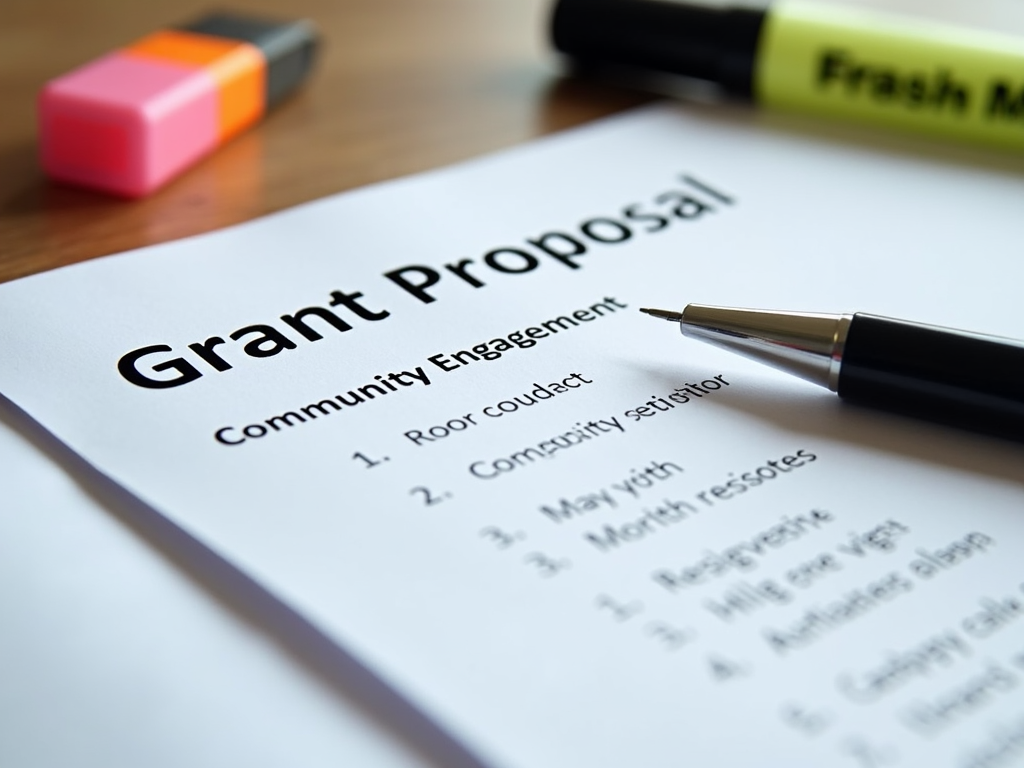The Importance of Community Engagement in Grant Proposals
By , March 27, 2025
Overview
Community engagement is a vital component of successful grant proposals, particularly in service learning and volunteer initiatives. By involving the community, grant seekers can demonstrate the relevance and impact of their projects, thereby increasing their chances of securing funding. This article explores the importance of community engagement, provides strategies for effective involvement, and offers tips for writing winning grant proposals.
Why Community Engagement Matters in Grant Proposals
When applying for grants, especially those focused on service learning and volunteer work, showing that your project has strong community support can make a significant difference. Funders want to see that the community is invested in the project and that it addresses real needs. Community engagement helps to:
- Build Trust and Credibility: When community members are involved in the planning and execution of a project, it shows that the initiative is not just a top-down approach but a collaborative effort. This builds trust and credibility with both the community and the funders.
- Ensure Relevance: By engaging with the community, you can better understand their needs and priorities. This ensures that your project is relevant and addresses the issues that matter most to the people it aims to serve.
- Enhance Sustainability: Projects that have strong community buy-in are more likely to be sustainable in the long term. Community members can become advocates for the project, helping to maintain momentum even after the grant funding ends.
- Demonstrate Impact: Funders are more likely to support projects that can demonstrate tangible impact. Community engagement allows you to gather data and stories that showcase the project's effectiveness.

Strategies for Effective Community Engagement
Engaging the community effectively requires thoughtful planning and execution. Here are some strategies to consider:
- Start Early: Involve the community from the beginning of the project planning process. This ensures that their input shapes the project's direction and goals.
- Use Multiple Channels: Reach out to the community through various channels, such as social media, local newspapers, community bulletin boards, and word-of-mouth. This helps to ensure that you reach a diverse audience.
- Host Inclusive Meetings: Organize meetings that are accessible to all community members, considering factors like location, time, and language. Provide childcare or transportation if possible to remove barriers to participation.
- Listen Actively: When engaging with the community, listen more than you speak. Ask open-ended questions and encourage feedback. Show that you value their input by incorporating it into your project plans.
- Build Partnerships: Collaborate with local organizations, schools, and businesses to amplify your reach and resources. These partnerships can also lend credibility to your project.
- Provide Regular Updates: Keep the community informed about the project's progress. Regular updates help to maintain interest and engagement.
Overcoming Challenges in Community Engagement
While community engagement is crucial, it can also present challenges. Here are some common obstacles and how to address them:
- Language Barriers: If your community is linguistically diverse, provide translation services or materials in multiple languages. Partner with local translators or cultural organizations to facilitate communication.
- Cultural Differences: Be aware of cultural norms and sensitivities. Engage cultural liaisons or community leaders to help navigate these differences and ensure that your engagement efforts are respectful and inclusive.
- Lack of Trust: Building trust takes time. Be transparent about your intentions and follow through on your commitments. Show that you are genuinely interested in the community's well-being, not just in securing funding.
- Limited Resources: Community engagement can be resource-intensive. Look for volunteers or interns to help with outreach efforts. Also, consider leveraging technology, such as online surveys or virtual meetings, to reach more people with fewer resources.

Case Studies or Examples of Successful Community Engagement in Grant Proposals
To illustrate the impact of community engagement, let's look at a couple of examples:
- Example 1: Service Learning Project in a Local School
A local nonprofit organization applied for a grant to implement a service learning project in a nearby school. They involved teachers, students, and parents in the planning process through workshops and surveys. This engagement helped tailor the project to the school's specific needs and garnered strong support from the school community. The grant proposal highlighted this engagement, including testimonials from participants, which contributed to securing the funding.
- Example 2: Volunteer-Led Environmental Initiative
A community group sought funding for an environmental conservation project. They organized community clean-up events and educational workshops to raise awareness and gather input. The grant proposal included data on community participation and feedback, demonstrating widespread support and the project's potential impact. The funders were impressed by the level of community involvement and awarded the grant.
These examples show how community engagement can strengthen grant proposals by providing evidence of support and relevance.
Tips for Writing a Winning Grant Proposal with Strong Community Engagement
When writing your grant proposal, keep these tips in mind to effectively showcase your community engagement efforts:
- Include Community Input in Your Needs Assessment: Use data and quotes from community members to illustrate the needs your project addresses.
- Describe Your Engagement Strategies: Detail how you involved the community in the planning process and how you will continue to engage them during implementation.
- Highlight Partnerships: Mention any collaborations with local organizations or groups that enhance your project's credibility and reach.
- Use Stories and Testimonials: Share personal stories or testimonials from community members to bring your proposal to life and demonstrate impact.
- Show Sustainability: Explain how community engagement will help sustain the project beyond the grant period.
By incorporating these elements, you can create a compelling narrative that resonates with funders and increases your chances of success.

Summary
In conclusion, community engagement is a critical factor in crafting successful grant proposals, particularly for service learning and volunteer projects. By involving the community, you can ensure that your project is relevant, supported, and sustainable. Use the strategies and tips provided in this article to enhance your engagement efforts and write winning grant proposals. Remember, authentic community involvement not only strengthens your proposal but also enriches the project itself.